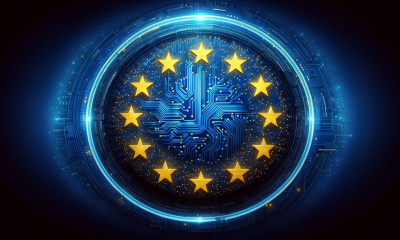
News
The Dark Side of AI: The Risks and Threats of Artificial Intelligence

Artificial Intelligence (AI) is a rapidly developing technology with the potential to revolutionize our lives. AI has become a popular topic of conversation, with many people excited about its potential to make our lives easier and more efficient.
However, with the potential for great reward comes the potential for great harm, and it is important to consider the potential risks and threats that AI poses. This article will explore some of the potential dangers of AI and the ways in which they can be mitigated.

The Risks and Threats of AI
While the risks and threats of AI are significant, there are steps we can take to mitigate them. The risks and threats of AI are diverse and range from cybersecurity threats and privacy violations to job losses and even existential threats to humanity. Here are some of the key risks and threats of AI:
Cybersecurity threats: AI can be used by hackers to automate attacks and breach cybersecurity systems. For example, AI-powered bots can be used to launch distributed denial of service (DDoS) attacks or to identify and exploit vulnerabilities in networks.
Privacy violations: AI can be used to collect and analyze vast amounts of personal data, which can be used to invade people’s privacy, discriminate against them, or manipulate their behavior. For example, facial recognition technology can be used to identify people without their consent or to track their movements without their knowledge.

Job losses: AI has the potential to automate many jobs, leading to significant job losses in certain sectors. For example, self-driving cars could put millions of truck drivers out of work, while chatbots and virtual assistants could replace customer service representatives. it could lead to a decrease in creativity, as humans are replaced by machines that can do the same job faster and more efficiently
Biases and discrimination: AI systems can perpetuate biases and discrimination, either unintentionally or intentionally. For example, AI-powered hiring systems could perpetuate gender or racial biases, while AI-powered credit scoring systems could discriminate against people based on their socioeconomic status.
READ ALSO: Boosting Efficiency with AI: A Comprehensive Guide
Existential threats: There are concerns that advanced AI systems could pose an existential threat to humanity, either through intentional or unintentional actions. For example, if an advanced AI system becomes self-aware and decides to eliminate humanity for its own survival, we could face an existential threat.
Threat to privacy: AI can be used to collect and analyze large amounts of data, making it possible for companies to track our movements and make inferences about our behavior. This could lead to an increase in surveillance and a decrease in privacy.
Additionally, AI can be used to create malicious software and deep fakes, making it difficult to trust the information that we are presented with. It can also be used to spy on people and organizations, making it a powerful tool for surveillance.
[the_ad id=”41670″]
Mitigating the Risks and Threats of AI
Fortunately, there are measures that can be taken to mitigate the risks and threats of AI. For example, governments and companies can implement regulations and policies to protect users’ data and privacy.
Robust cybersecurity measures: To mitigate the cybersecurity threats posed by AI, we need to implement robust cybersecurity measures, such as encryption, firewalls, and intrusion detection systems. Additionally, we need to ensure that AI systems are designed with security in mind and are regularly audited for vulnerabilities.
Job retraining and reskilling: To mitigate the risks of job losses, we need to invest in job retraining and reskilling programs to help workers transition to new jobs that cannot be automated by AI. Additionally, we need to invest in education and training programs that equip people with the skills needed to work alongside AI.
Auditing and accountability: To ensure that AI systems are not perpetuating biases or discrimination, we need to regularly audit AI systems and hold organizations accountable for any unethical or discriminatory practices. Additionally, we need to ensure that there is transparency in the use of AI and that people have a say in how AI is being used.
Research and development: To mitigate the risks of existential threats posed by AI, we need to invest in research and development to ensure that AI systems are designed with safety in mind. Additionally, we need to establish international agreements and protocols for the development and use of advanced AI systems, such as ensuring that AI systems are not developed for military purposes or used in weapons systems.
READ ALSO: The Future is Here: How AI is Changing Business Forever and Creating Competitive Advantage
Public education and awareness: To ensure that the risks and threats of AI are understood by the public and that people can make informed decisions about the use of AI, we need to invest in public education and awareness programs. These programs should aim to inform the public about the potential risks and benefits of AI, as well as how to protect their privacy and security.
Collaboration and partnerships: To address the risks and threats of AI effectively, we need to collaborate and form partnerships between industry, government, academia, and civil society. By working together, we can develop ethical guidelines and regulations, establish best practices, and coordinate our efforts to ensure that AI is used for the benefit of humanity.
Ethical guidelines and regulations: To mitigate the risks of privacy violations, biases, and discrimination, we need to establish ethical guidelines and regulations for the use of AI. These guidelines should ensure that AI is used in a fair and transparent manner, that personal data is protected, and that potential biases and discrimination are minimized.
AI has the potential to revolutionize our lives and provide great rewards. However, it also poses certain risks and threats, and it is important to consider these when developing and deploying AI technology. By taking steps to mitigate the risks and threats of AI, we can ensure that it is used responsibly and ethically and that its benefits are realized by all.



























